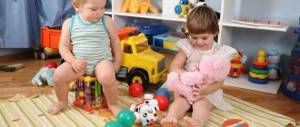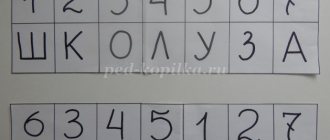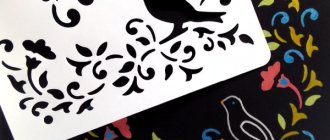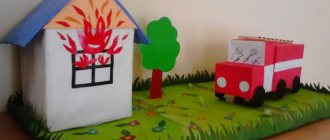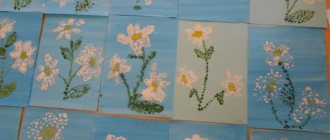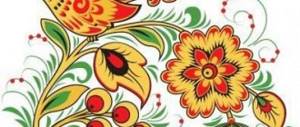Abstract of the open OOD on Ecology in the preparatory group “Young ecologists”
Abstract of OOD in the educational field: “Cognitive development” (Ecology)
Topic: “Young ecologists”
Age group: pre-school
Leading educational field: “Cognitive and research”
Integration of educational areas: cognitive, social-communicative, physical development.
Goal: To develop in children a careful attitude towards natural resources.
Tasks:
Educational:
develop the ability to clearly answer questions posed;
To form ideas about the profession of ecologist.
Educational:
develop children’s cognitive activity using activity-based approach technologies (experimentation, creating problem situations);
develop curiosity, memory, ability to draw conclusions;
develop in children an emotional and value-based attitude towards nature.
Educational:
cultivate interest in the ecologist profession;
continue to cultivate a love for nature and respect for it.
Equipment and material: voice message, soil model (in a transparent container), pipette, ink, watering can with water, candle, white plate, disposable caps, white coats, plastic transparent glasses with contaminated water, funnels with filters (cotton pads) and clean transparent cups, cotton swabs, wet wipes, “Young Ecologist” emblems.
OOD progress:
1.Introductory part
Educator: Guys, let’s stand in a circle of joy, hold hands and greet each other with kind smiles:
Hello, golden sun, (we raise our hands up, closing a circle with them)
Hello, the sky is blue, (we spread our arms to the sides)
Hello, free breeze, (we wave our hands)
Hello, little oak tree! (We show that he is small, like the height of a child)
We live in the Don region. (we spread our arms at chest level)
I greet you all. (press palms to chest and spread again)
A loud telephone rings. A voice message has arrived.
Hello guys! Our nature in the Don region is beautiful and bright. However, there are people who have ceased to appreciate the beauty and purity that nature has given us. The nature of the Don region needs help. The land, water, air are polluted. We ask you to help conduct research. A lot of work, we can't cope! Sincerely, scientists, ecologists.
Educator: Guys, who are ecologists? (Children's answers)
Educator: Yes, they help nature, together with scientists they have found ways to purify water, land, and air from harmful substances.
Educator: Guys, do you want to be environmentalists?
Educator: So now I suggest you turn into ecologists and go to our scientific laboratory.
Educator: How should you behave in the laboratory?
Children: 1) Do not disturb each other, work quietly; 2) begin the experiment only after explanation and permission; 3) after the experiment, everything must be removed; 4) after finishing work, wipe your hands with a napkin.
2. Main part
Educator: Guys, let’s conduct an experiment with soil.
Educator: In front of you is a soil model, in a container. I put ink into a pipette and drop it onto the soil. Imagine that some toxic substance has fallen onto the soil.
Educator: Look at the spot, it’s very small. Tell me, does the stain bother you?
Children: No.
Educator: Do you think this substance can harm the soil and nature? (Children's guesses)
Educator: This substance has spread over the soil and is not bothering anyone, but then it started to rain. (I water the soil from a watering can).
Educator: What happened to the rainwater?
Children: The water passed through the soil.
Educator: What color is rainwater now? Why is she like this? (Children's answers)
Educator: Guys, where do you think a toxic substance can get after rain?
Children: To the river, pond, lake.
Educator: Of course, in any body of water. We had a very small spot, but in nature a spot can occupy a huge area and this is very harmful to the environment.
Educator: Ecologists can work not only in laboratories, but also in nature - planting trees and shrubs, caring for them, cleaning them.
Educator: Let's go out into the forest.
Educator: Oh, what happened? The clouds have rolled in. I think it's going to rain now.
Physical exercise “Evil Cloud” (Children repeat the movements after the teacher to the music)
Educator: The rain prevented us from working outdoors. Let's go back to the laboratory.
Educator: Guys, what did the water become when it passed through the soil? And this water can end up in a river, a lake, or any body of water. What do you think should be done with this water? (Children's guesses)
Educator: Let's do a little experiment on water purification. (Children move to tables where there are plastic glasses with contaminated water, funnels with filters and clean jars)
Educator: Pay attention to the water. Can I drink this water?
Children: No.
Educator: Now we will clean it. The funnels have a filter, it consists of a cotton pad; this filter will trap dirt particles. Try pouring some water into the funnel and watch how the water clears.
Educator: Can we say that water in a jar is cleaner than in a glass?
Children: Yes, you can.
Educator: Can we say that the filter helps purify the water?
Children: Yes.
Educator: Guys, is the water that we cleaned now safe to drink?
Children: No, it’s not completely clean yet.
Educator: Yes! This water is not yet clean enough for drinking, but it is quite suitable for watering flowers.
Educator: So that the water can be used for food, huge filters are installed at special treatment plants and they purify the water, and also to ensure that dirty water does not fall into the river. (Slide show)
Slide show showing a city in smog.
Educator: Do you think these photographs show clean air in the city? (Children's answers)
Educator: Guys, where is dirty air found in our city?
Children: At bus stops, near factories, in parking lots.
Educator: Yes. All this pollutes the air. (Lights a candle) What do you see?
Children: The candle is burning.
Educator: Can a flame pollute the air? After all, we see nothing but flames. (Children's answers)
Educator: Now we will check. I'll take a plate and hold it over the flame for a little while. What appeared at the bottom of the plate?
Children: Soot.
Educator: Take a cotton swab and touch the stain. What color did she become?
(Children's answers)
Educator: We made sure that the smoke settled on the plate. This is how it is in nature: smoke settles on our houses, cars and trees. Where does the smoke come from?
Children: From fires, factory chimneys.
Educator: How to protect the air from smoke?
Children: Install filters on factory pipes, change fuel in cars.
Educator: If plants and factories and cars smoke like this, our bright world will lose its strength and beauty. We won't see a rainbow or sunshine.
3. Final part (reflection)
Educator: Guys, what new have you learned? What was the most memorable thing about our research? (Man pollutes the soil and air; nature needs to be helped; ecologists are conservationists; we have learned to purify water using filters)
Educator: Guys, today you helped very well: in conducting experiments. Well done! You are true defenders and helpers of nature. Scientists ecologists gave you the “Young Ecologist” emblems.
Preparatory group. Senior preschool age. Children 6-7 years old
Summary of the environmental quest “Nature Rescuers” for children of the preparatory group Goal: fostering a sense of love for nature, respect for all living things, the formation of an environmental culture . Objectives: Educational: • consolidate children's knowledge about plants and animals; consolidate knowledge and skills of behavior in nature; generalize and expand children’s ideas about...
Conversation in the preparatory group “Fire safety in nature” Purpose: To expand and systematize children’s knowledge about nature, to develop interest in the problem of nature conservation, to introduce children to the norms and rules of behavior in nature. Objectives: To form in children an idea of fire safety in nature, the dangers of lighting fires...

